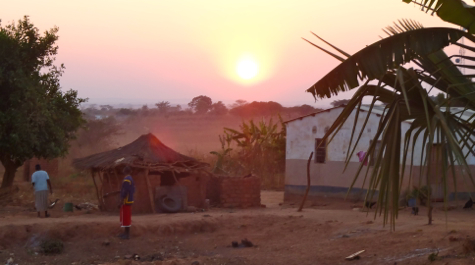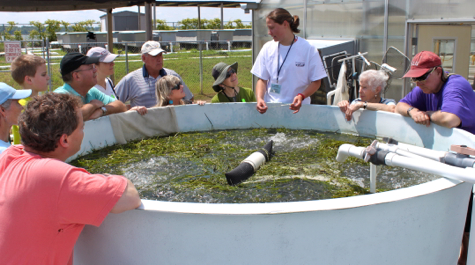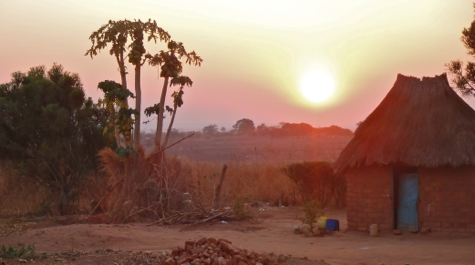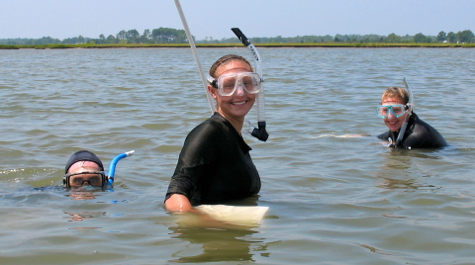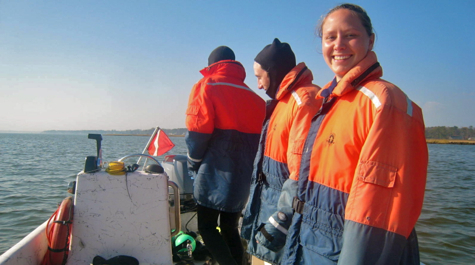VIMS alumna joins Peace Corps in Zambia
Blackburn to blog about her experiences in creating fish farms
As part of her graduate studies at the Virginia Institute of Marine Science, Master’s student Natalia "Jaime" Blackburn learned in intricate detail about efforts to curb the nutrient inputs that lead to excessive algal growth in Chesapeake Bay.
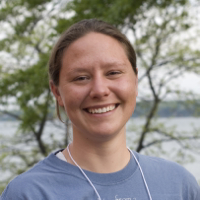 In her first job after graduating from VIMS—the “toughest job she’ll ever love” as a Peace Corps volunteer in Zambia—Blackburn will reverse course, purposefully using nutrients to grow algae in profusion.
In her first job after graduating from VIMS—the “toughest job she’ll ever love” as a Peace Corps volunteer in Zambia—Blackburn will reverse course, purposefully using nutrients to grow algae in profusion.
Blackburn will raise the algae as food for tilapia and other fishes, in ponds she’ll help build and manage in a village within the Chibombo district of Zambia’s Central Province. Fish farming is seen an effective way to help rural Zambians raise their standard of living and add needed protein to their diet.
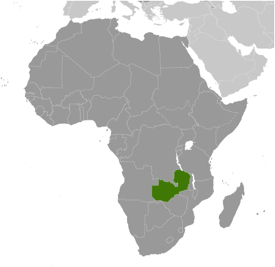 Zambia, a land-locked country in southern Africa, is one of the poorest nations on Earth, with 64% of the population below the poverty line and a per capita gross domestic product of only $1,600 per year.
Zambia, a land-locked country in southern Africa, is one of the poorest nations on Earth, with 64% of the population below the poverty line and a per capita gross domestic product of only $1,600 per year.
Blackburn is currently in the midst of a 3-month training period in the city of Chongwe—about an hour outside the Zambian capital of Lusaka. She lives in a 1-room mud hut on a family compound with no running water or electricity. Her host family does all of their cooking over charcoal-burning braziers.
Blackburn is blogging about her Peace Corps experience via posts on VIMS’ blog site at http://vims.blogs.wm.edu. She plans to post blog entries and photos every 2 weeks or so as time and bandwidth permit, reporting on the progress of her fish-farm project as well as her personal interactions with her newfound Zambian friends.
“I call my blog ‘Fish'N'shima’,” says Blackburn. “'Fish' because of the fish farming, and 'shima' for the staple food here. It's a thick cornmeal pudding, something like polenta, that you grab lumps of and use as your utensil to eat the other food on your plate.”
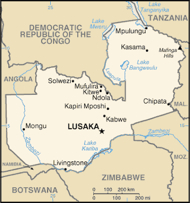 In her first Fish'N'shima post, on August 26, Blackburn writes: “My host family is incredibly friendly and welcoming, and I love playing with the children. Every evening when I get home from training we do something together. Sometimes I will bring out coloring books and markers, and the whole family will sit on reed mats and color together. A few days ago I taught all the kids how to throw a Frisbee, and we spent an hour playing catch. My favorite evening pastime, though, has been dancing.”
In her first Fish'N'shima post, on August 26, Blackburn writes: “My host family is incredibly friendly and welcoming, and I love playing with the children. Every evening when I get home from training we do something together. Sometimes I will bring out coloring books and markers, and the whole family will sit on reed mats and color together. A few days ago I taught all the kids how to throw a Frisbee, and we spent an hour playing catch. My favorite evening pastime, though, has been dancing.”
Blackburn says she decided to join the Peace Corps “because I've been in school for so long, learning how to make the world a better place, and I saw this as a great opportunity to give back by making a substantial improvement in someone's life.”
Blackburn earned her Master’s degree from the College of William and Mary’s School of Marine Science at VIMS in spring 2012. Her thesis research focused on better understanding the physical and biological processes that influence the burial and survival of eelgrass seeds within the seafloor sediments of Chesapeake Bay and Virginia’s coastal lagoons.
Low germination rates have been a significant bottleneck in otherwise successful seed-based restoration efforts led by VIMS professor JJ Orth and colleagues in VIMS’ internationally renowned Seagrass Monitoring and Restoration Program. Seagrasses play a key role in marine ecosystems, providing food, cover, and nursery habitat for a number of commercially and recreationally important fish and shellfish species. But as photosynthetic plants, they suffer from the shading caused by nutrient-fueled algal blooms—blooms that can also lead to low-oxygen or “hypoxic” “dead zones” when the algae die, sink, and decay.
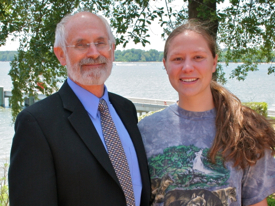
“VIMS taught me everything I know about water quality and hypoxia,” says Blackburn, “which in a backwards way—because of everything I learned about how to avoid blooms in the Bay—will help me create algal blooms in my ponds, as the major food source for the fish.”
Blackburn says the overall goal of her 2-year assignment will be to “show rural farmers how to build, stock, manage, and harvest fish ponds,” an educational mission that will benefit from her year of classroom teaching as a fellow in the VIMS GK-12 PERFECT Partnership.
She notes that Zambia is an ideal location for fish farming “because the people need the protein, they have land and water for ponds, and they are relying on increasingly stressed capture fisheries from their local lakes and rivers, so there is a consistent demand for fish.”
Once they’ve built their ponds, Blackburn and local farmers will stock them with three species of bream: red-breasted (Tilapia rendalli), three-spotted (Oreochromis andersonii), and green-headed (O. macrochir). These species are well suited for aquaculture because they grow quickly, tolerate crowding, and are resistant to disease. Most people also find them tasty.
Blackburn arrived in Zambia in July, and has now nearly completed her 3 required months of training in language (Tonga), culture, technical issues, health, and safety. When the training is complete, she will be sworn in as an official Peace Corps volunteer.
She reports that the weather in the tropical country is currently “not too hot.” “It's actually just getting out of the cold season.” she says, “It's cool at night and warm during the day, like fall in Virginia.”
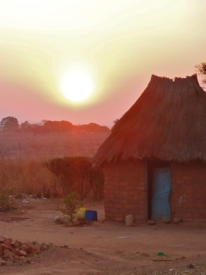 Blackburn compares the local landscape to her native California. “It looks similar to the foothills of the Sierra Nevada where I grew up,” she says. “There are golden rolling hills dotted with trees. It's not until you look closely that you realize the trees are mangoes, bananas, and papayas, and that the gold is shoulder-high weeds rather than grass.”
Blackburn compares the local landscape to her native California. “It looks similar to the foothills of the Sierra Nevada where I grew up,” she says. “There are golden rolling hills dotted with trees. It's not until you look closely that you realize the trees are mangoes, bananas, and papayas, and that the gold is shoulder-high weeds rather than grass.”
That gold will soon begin to turn green, as the country enters its October-to-April rainy season. Annual rainfall in Zambia averages from 50 inches in the north to 20-30 inches in the south, providing plenty of water for creating fishponds, and for feeding the Zambezi and Congo rivers—which both arise on the Zambian plateau—as well as several of the larger lakes in Africa: Bangweulu, Mweru, Kariba, and Tanganyika.


